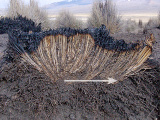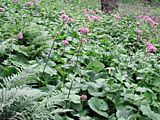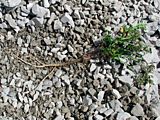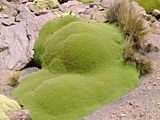Examples of functional strategies
(after de Kroon and Schieving 1990, Stöcklin 1992)
The foraging strategy
Foraging clonal plants explore patchy habitats opportunistically, and the main function of clonal growth of such plants is the ability to spread laterally. Foraging means that plants are able to place ramets selectively in favorable patches and to reduce growth in bad patches. Variable space among ramets and variable branching probability are key properties (example: many sedges).
The dominance strategy
Clonal plants with this strategy are able to dominate the vegetation and to monopolize the available resources in space and time. Frequently such plants are characterized by a high productivity, a high degree of physiological integration among ramets, and are strong competitors (example: tall herbs from nutrient rich, wet sites).
The expansive strategy
Plants with long runners or stolons show intensive lateral spread. They occur usually in open, but not necessarily poor habitats. The main feature of such plants is to rapidly colonise open space (example: plants from early successional habitats or plants on screes).
The conservative strategy
In inherently resource-poor environments conservative clonal plants are able to efficiently make use of scarce resources. In such habitats an explorative strategy will not be successful. Slow growth and turnover of plant parts, a high degree of nutrient resorption from sencescing structures are typical features (example: alpine cushion plants).




